Canada
 |
The flag of Canada was officially adopted on February 15, 1965. The Canadian Red Ensign, bearing the Union Jack and the shield of the royal arms of Canada, was lowered and then, on the stroke of noon, the new maple leaf flag was raised. The crowd sang the national anthem O Canada, followed by the royal anthem, God Save the Queen. The stylish red maple leaf has been the national symbol of Canada for over 150 years. Red and white are the official colors of Canada, proclaimed by King George V in 1921. |
|
Canada is a country in the northern half of North America. Its ten provinces and three territories extend from the Atlantic to the Pacific and northward into the Arctic Ocean, covering 9.98 million square kilometres (3.85 million square miles), making it the world's second-largest country by total area and the fourth-largest country by land area. The capital is Ottawa. |
|
|
| Canadian Province and Territory Flags |
|
|
|
|
Canada is a country that has much to offer visitors, from island sights to scenic mountain waterfalls. Stretching from the Atlantic to the Pacific coasts, this former French and British colony has a rich heritage from the North Coast Indians of British Columbia to the French explorers of Quebec. Since both French and English are the national languages, a visit to Canada is like visiting two countries. Gros Morne National Park in Newfoundland is important to the world, geologically, because the ancient rocks help people understand how the oceans and continents were created. The park is a nature lover’s paradise featuring lowlands along the Gulf of St. Lawrence and the alpine setting of the Long Range Mountains. The park is popular with wildlife viewers who’ll see everything from tiny songbirds to giant whales; black bears, moose and deer are common. Victoria’s Inner Harbour on Vancouver Island is a cool place to visit. There’s the water on one side and stately government buildings on the other since Victoria is the capital of British Columbia. The city hosts a classic boat festival on Labour Day in September, with the harbor filling up with wooden boats. |
|
Gros Morne National Park in Newfoundland. |
Gros Morne National Park in Newfoundland. |
|
Victoria’s Inner Harbour on Vancouver Island. |
The Boat Festival on Labour Day. |
Government and politics
|
Victoria’s Inner Harbour on Vancouver Island. |
Canada has a parliamentary system within the context of a constitutional monarchy, the monarchy of Canada being the foundation of the executive, legislative, and judicial branches. The sovereign is Queen Elizabeth II, who is also monarch of 15 other Commonwealth countries and each of Canada's 10 provinces. As such, the Queen's representative, the Governor General of Canada, carries out most of the federal royal duties in Canada. To ensure the stability of government, the governor general will usually appoint as prime minister the person who is the current leader of the political party that can obtain the confidence of a plurality in the House of Commons Each of the 338 members of parliament in the House of Commons is elected by simple plurality in an electoral district or riding. . The 105 members of the Senate, whose seats are apportioned on a regional basis, serve until age 75. |
Geography
As the second largest country in the world, Canada includes a wide variety of land regions, vast maritime terrains, thousands of islands, more lakes and inland waters than any other country, and the longest coastline on the planet. In essence, Canada is a smorgasbord of landforms.
Significant landforms include the Appalachian Mountains; St. Lawrence River; Canadian Shield; Canadian Arctic Archipelago; Great Lakes; Hudson Bay; Great Plains; Lake Winnipeg; Columbia, Fraser, Mackenzie and Yukon Rivers; Great Bear Lake; Great Slave Lake; Rocky Mountains; Canadian Cordillera and the dozens of volcanoes along the Pacific Ring of Fire.
|
The Appalachian Mountains. |
St. Lawrence River. |
|
Canadian Shield geography in the Flin Flon, Manitoba region. The lake in the background is Big Island Lake. |
Climate
Canada is often associated with cold weather and snow, but in reality, its climate is as diverse as its landscape. Generally, Canadians enjoy four very distinct seasons, particularly in the more populated regions along the US border. Daytime summer temperatures can rise to 35°C and higher, while lows of -25°C are not uncommon in winter. More moderate temperatures are the norm in spring and fall.
Winters are generally cold with periods of snow, although southern Alberta enjoys the occasional "Chinook", a warm dry wind from the Rocky Mountains that gusts through and melts the snow. Winters are mild and wet on the west coast, in cities such as Vancouver and Victoria.
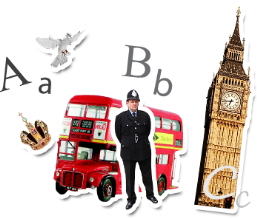
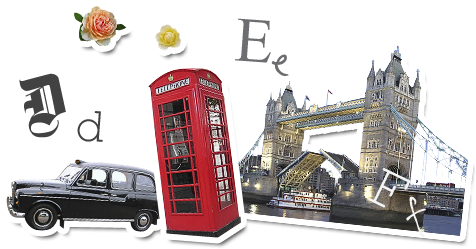
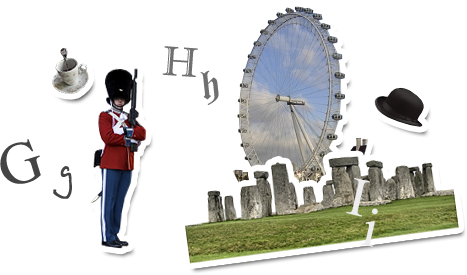
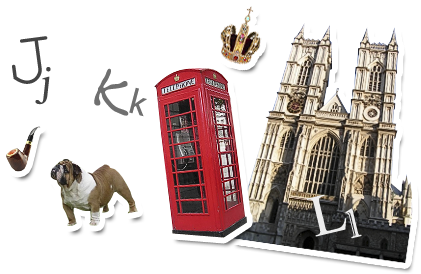
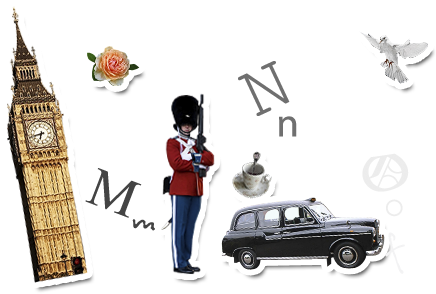



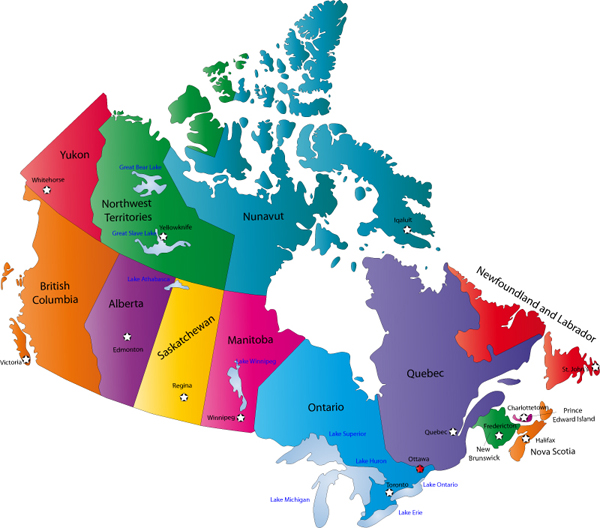

 British Columbia
British Columbia Quebec
Quebec Manitoba
Manitoba New Brunswick
New Brunswick  Newfoundland & Labrador
Newfoundland & Labrador Nova Scotia
Nova Scotia Northwest Territories
Northwest Territories Nunavut
Nunavut Ontario
Ontario Prince Edward Island
Prince Edward Island Saskatchewan
Saskatchewan Yukon
Yukon








